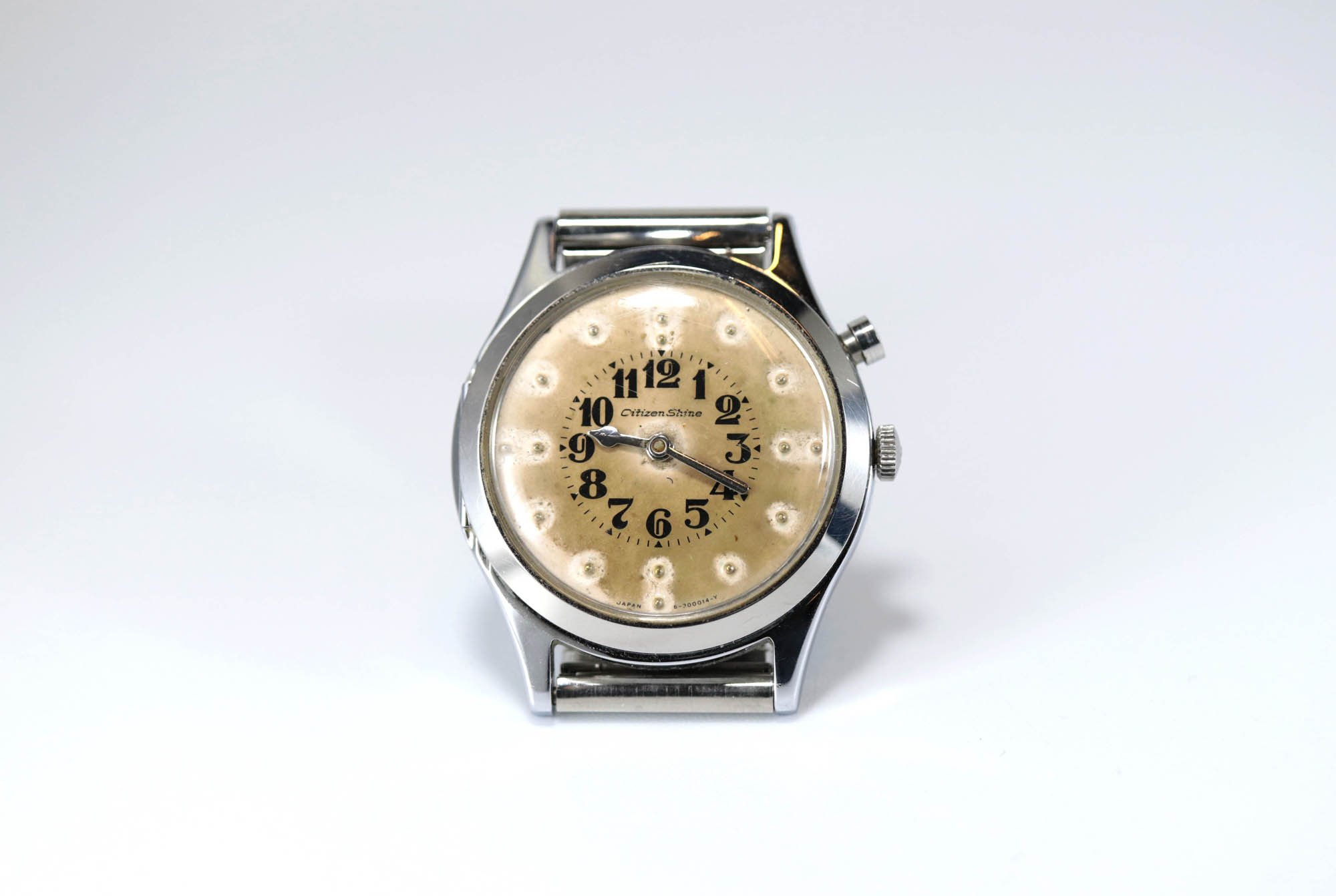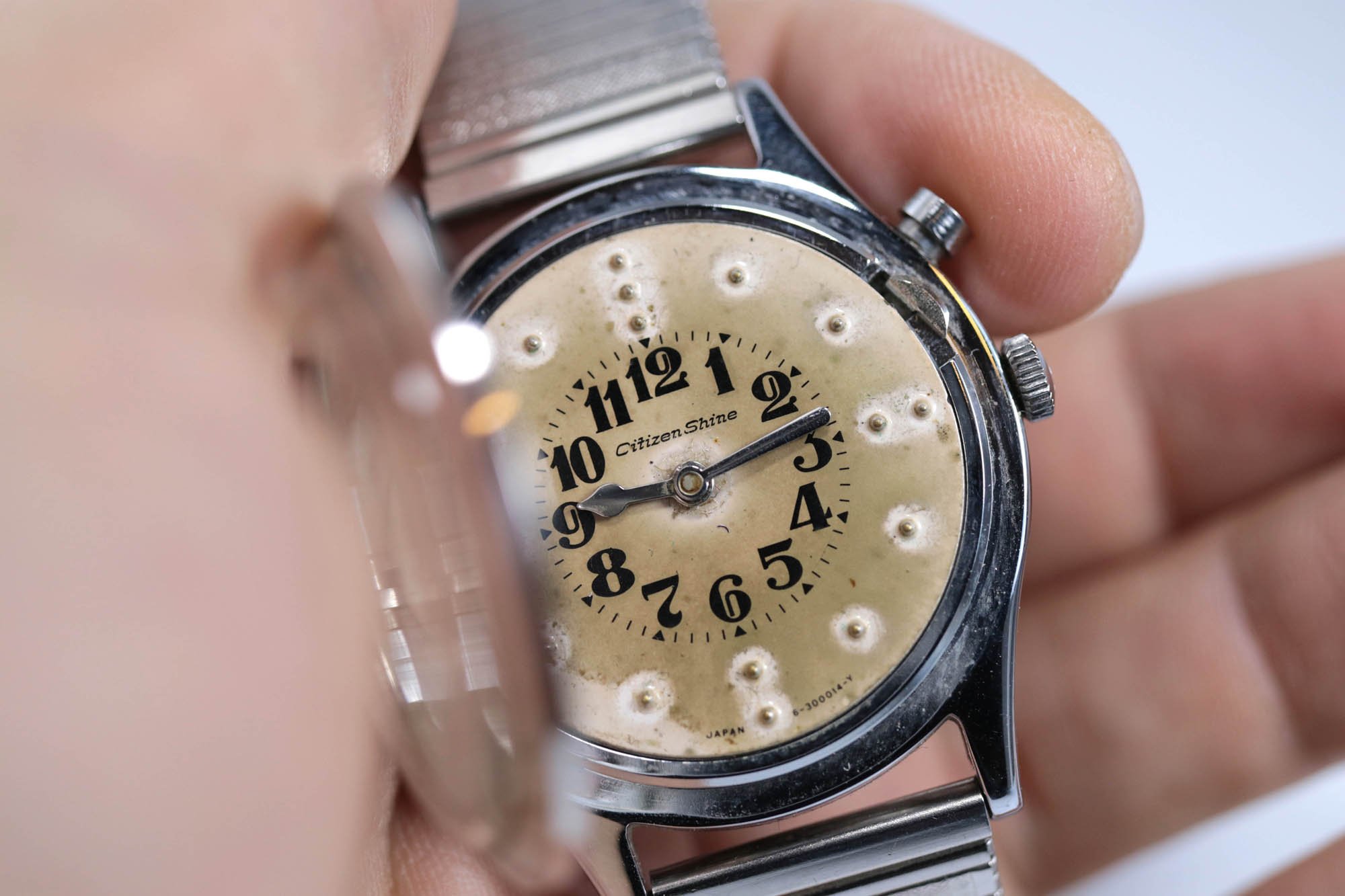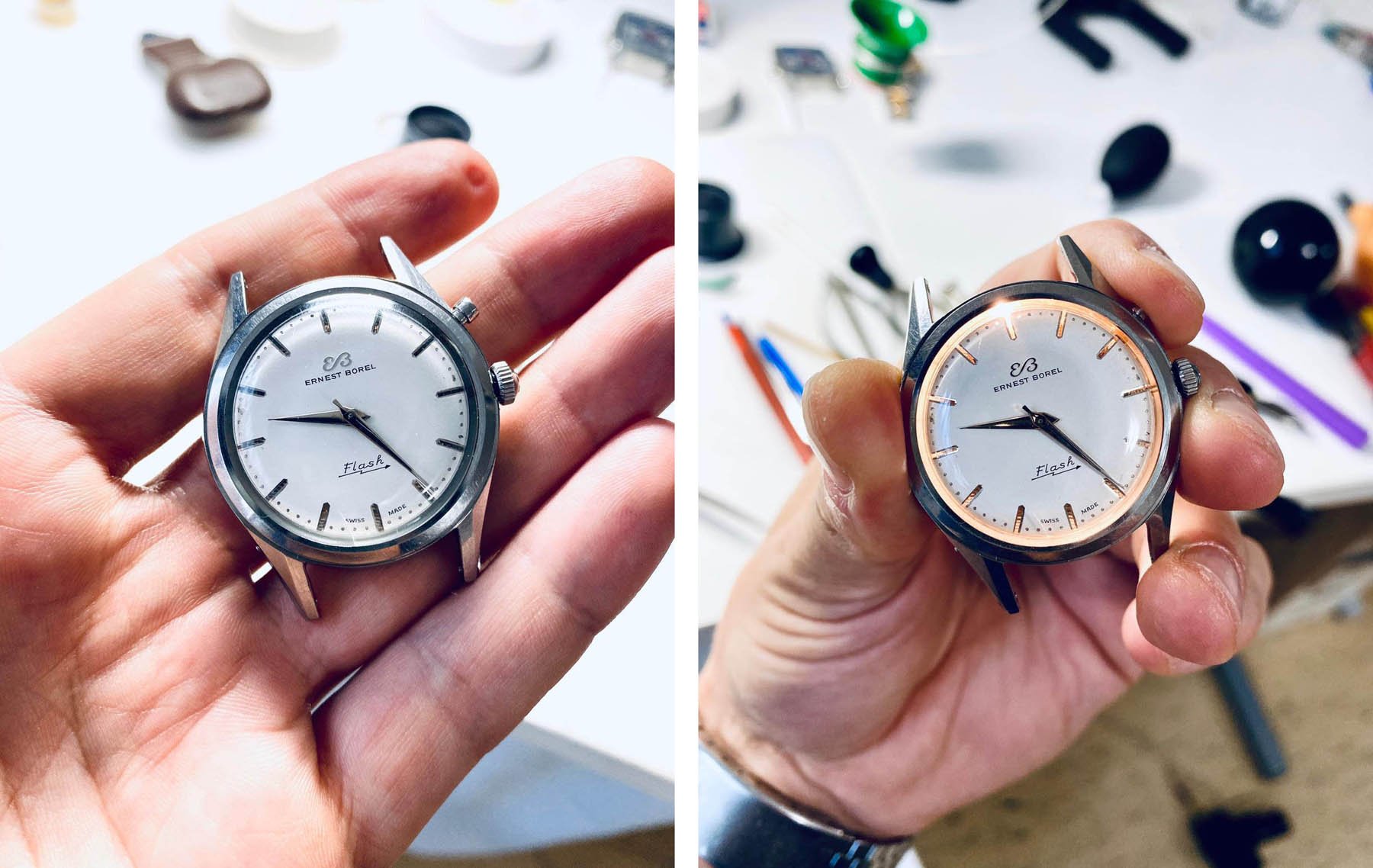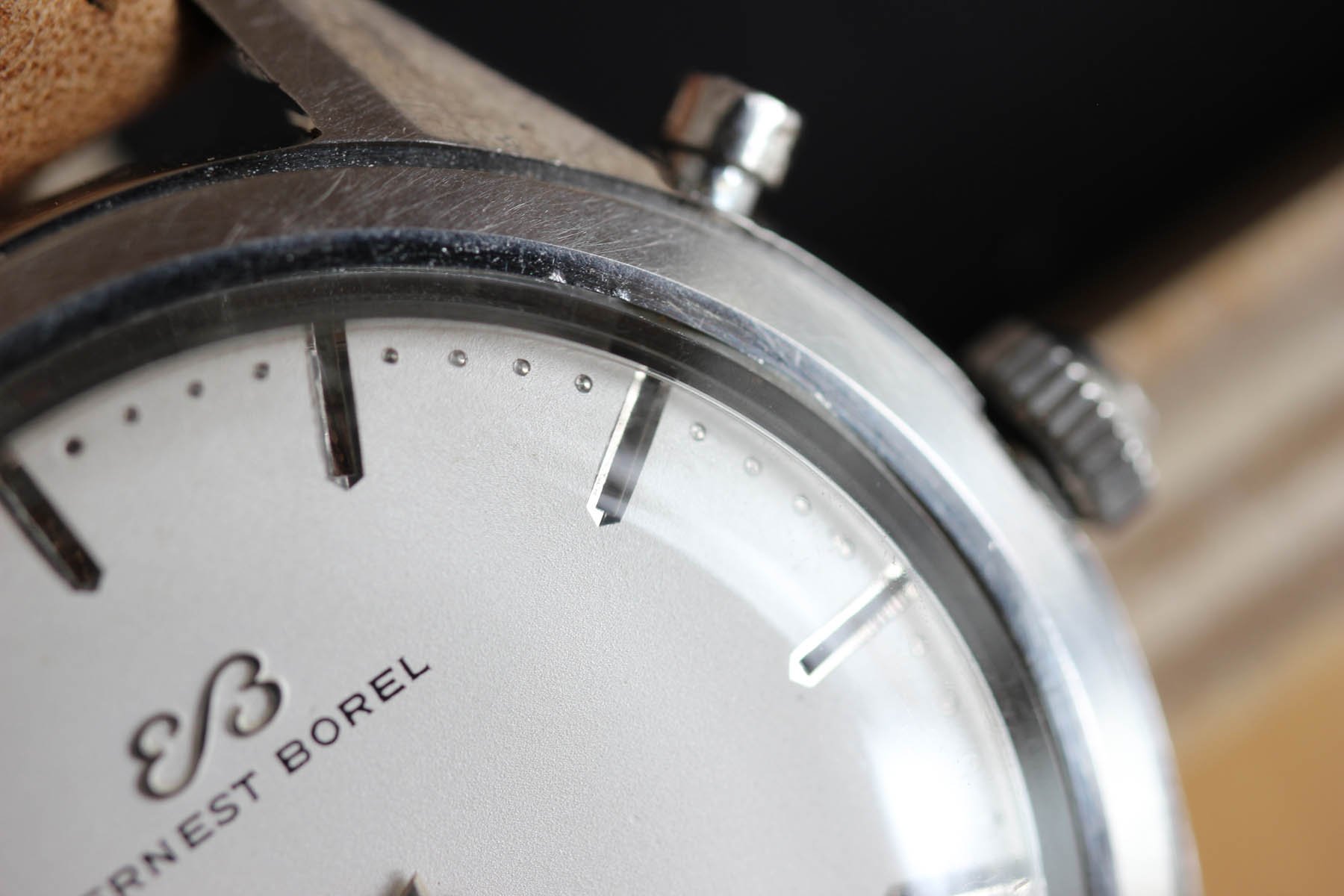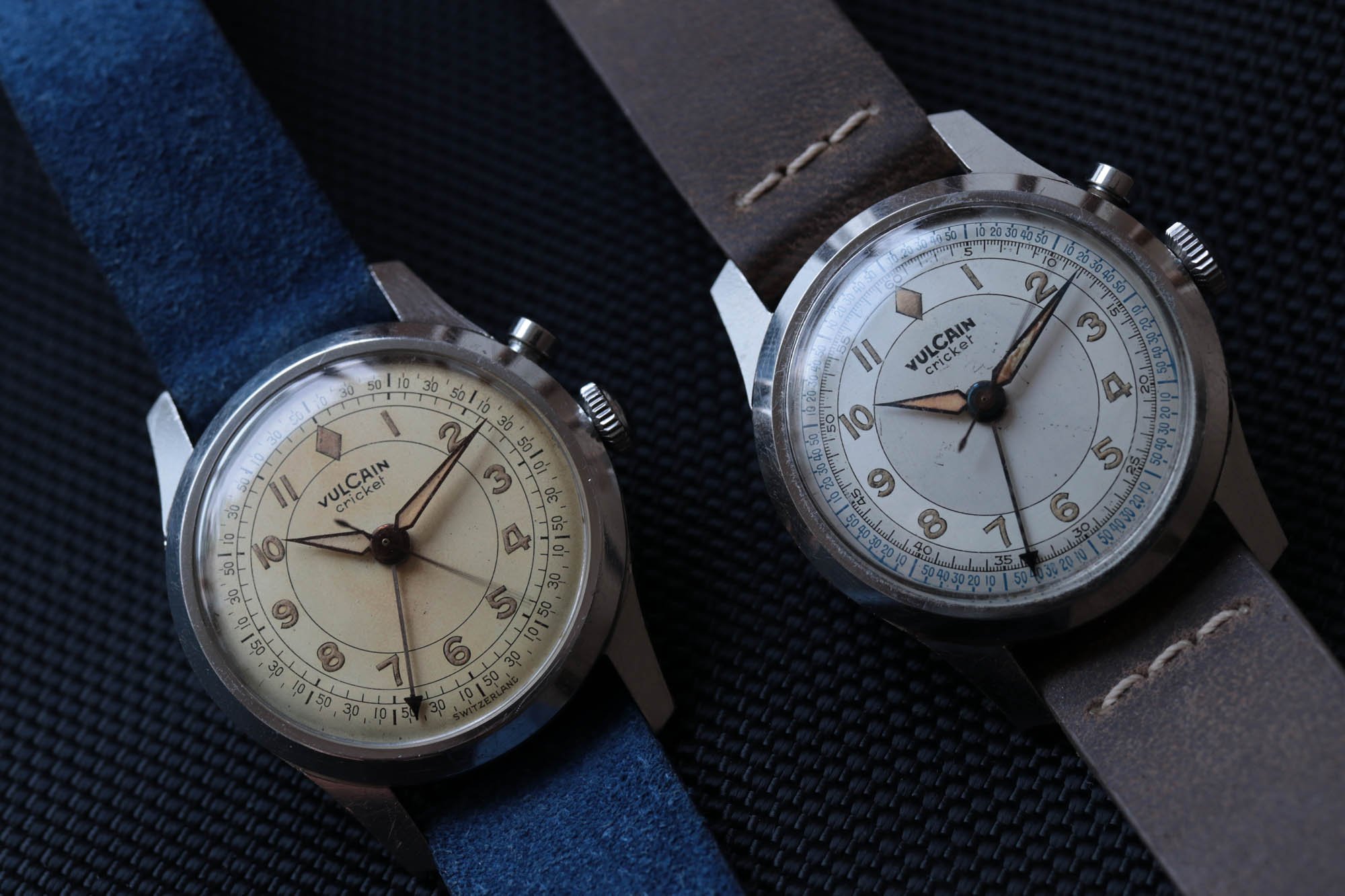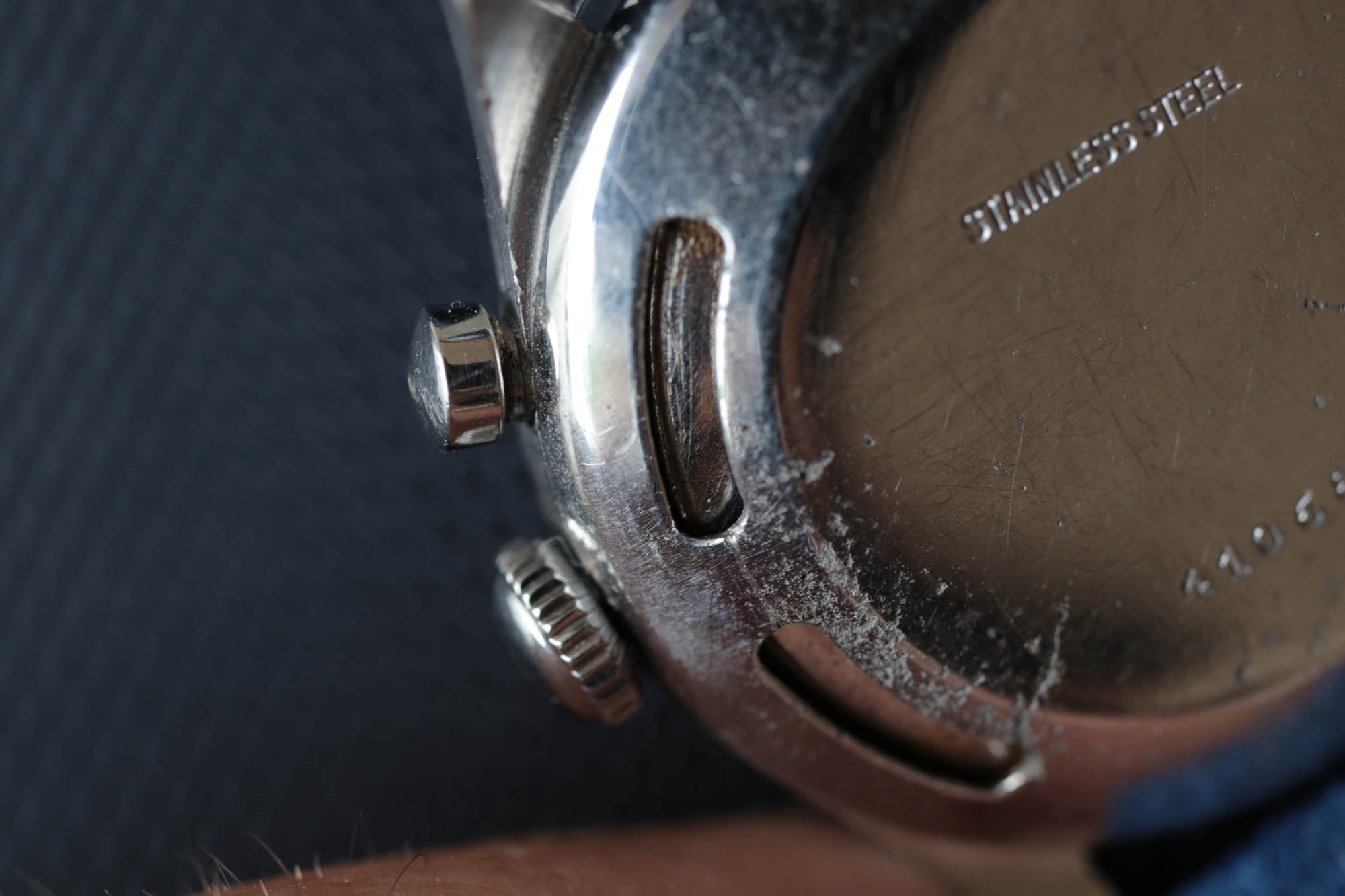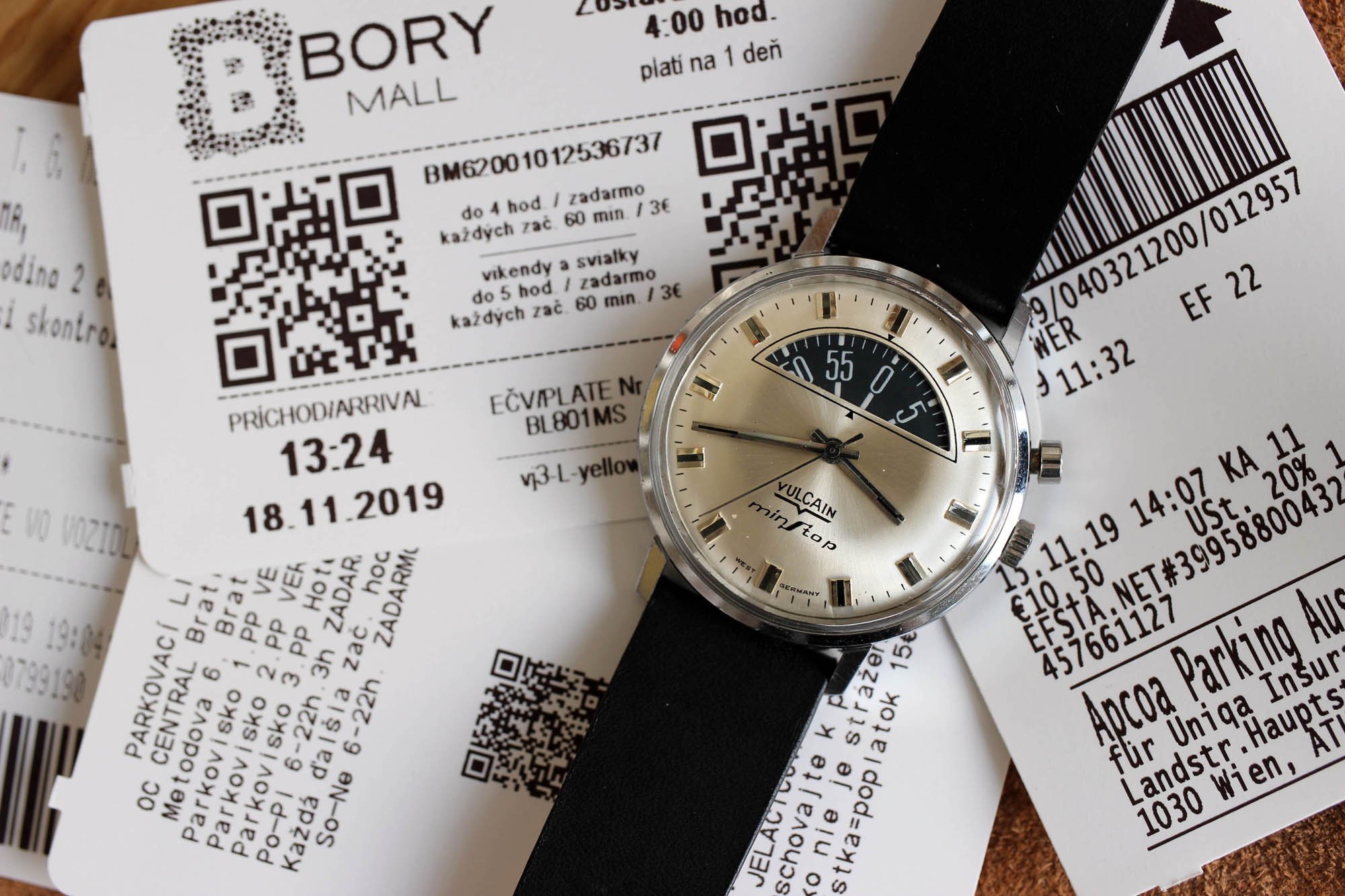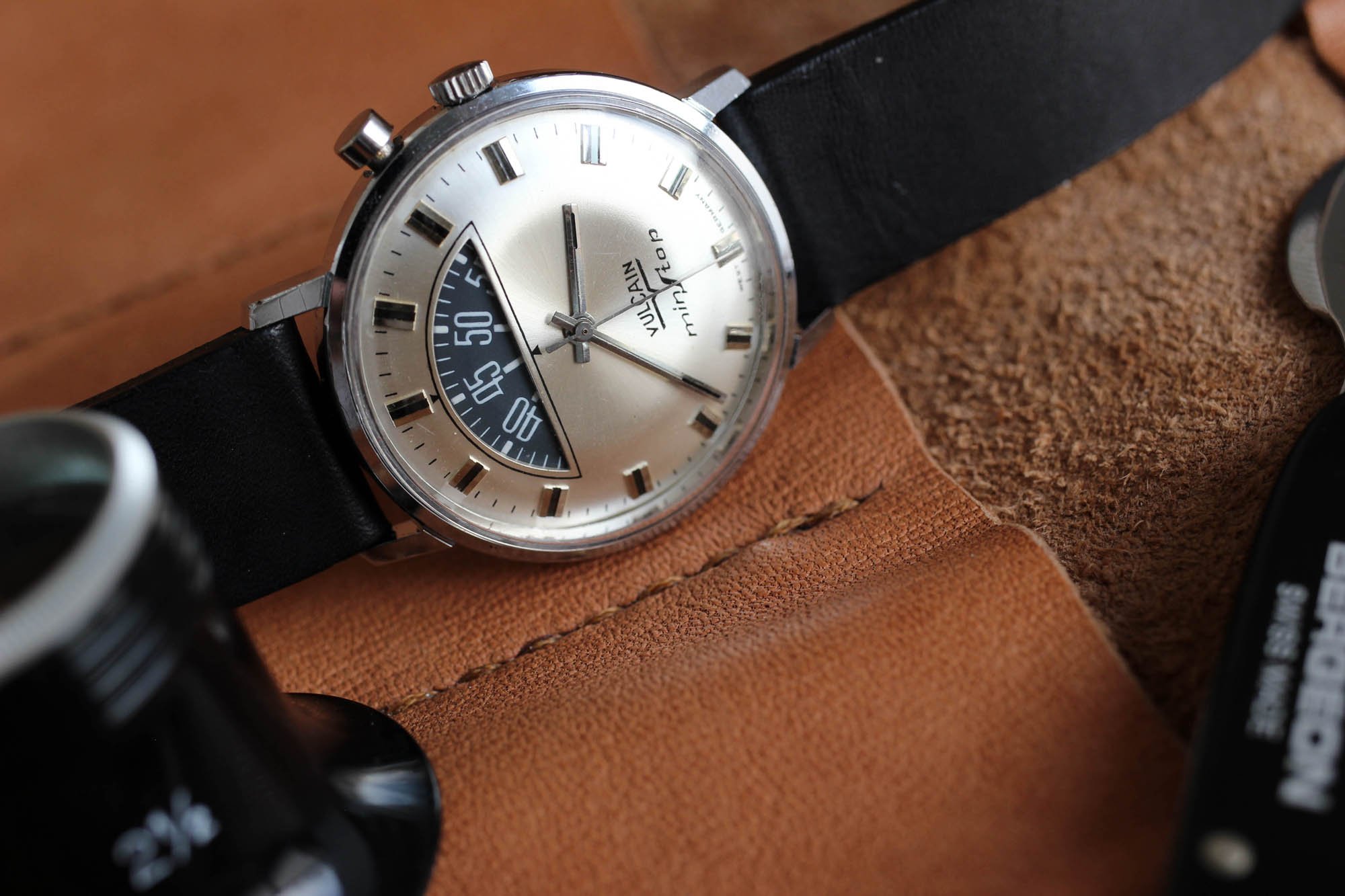The Top Four Weirdest Pushers On Vintage Watches — Find Out What They Are For
When you see that little mushroom-like cap sticking out from the case somewhere around the 2 o’clock position, you may instantly expect the watch to be chronograph. Well, it wouldn’t be the art of watchmaking if decades of invention and innovation hadn’t found other uses for them, right? Here is what the 4 most creative pushers can do!
If you have been a reader of Fratello Magazine for some time, you know very well that I am the weirdo within the editorial team that gets excited by any bizarre, creative, and quirky watch complications. Since I like to break stereotypes, you can also imagine how amused I am to come across a pusher that does anything other than starting or resetting a chronograph. Let‘s look back in time to find the Top 4 vintage watches with pushers utilized for surprising purposes.
Citizen Shine and the crystal-popping pusher
What function could a pusher on a watch that has no subdials and doesn’t even have all three hands possibly serve? Well, meet the most endearing pusher utilization I have ever encountered. The Citizen “Shine” was introduced in 1960 and it was Japan’s first wristwatch for visually impaired wearers.
Meeting the father of a good friend of mine who almost completely lost his eyesight at around the same time I added this watch to my collection was a rather eye-opening moment in my life. No pun intended. There is a good reason why the Citizen Shine has a firm place in my collection. This watch serves as a reminder to always be thankful for my health and a million other things we might take for granted, including our eyesight.
Besides that, the Citizen Shine 4-300017TA is a very cool watch. Let‘s start with the patina, which could easily beat any patina race you might witness on Instagram. The dirt and dust glued to the dial with sweat is a result of many years of fingertips wandering around the dial while reading the time. Well, that’s what I call the most honest and natural patina any human could ever create.
The Citizen Shine comes with a rather original and very durable case construction. The crystal is hinged to the case at nine and can be opened like a door. Considering how solid and reliable the mechanism has to be do endure years of use, it is actually the opposite of robust. In today’s world, we would say it is a minimalistic solution, hardly visible when looking from the front.
Now comes the hero of the day, the pusher. For the visually impaired wearer, it’s a starting point that operates the crystal-release mechanism. Anytime I put it on my wrist and try it (correction — play with it extensively) I am surprised at just how reactive and precise it is. The beaten crystal jumps instantly, with such confidence that could even make stand-up comedians jealous. I haven’t checked the prices since my purchase, but you certainly used to be able to pick one up for a reasonable sum. You can read the full story here.
Ernest Borel and the there-will-be-light pusher
If I called the previous pusher the most endearing, this one is for sure the most amusing. I was born in the ’80s so no wonder my first watch was some cheap digital quartz with a lit dial. Reading the time while hiding in my closet for no other purpose than to just test the light, is the kind of memory my kids will struggle to understand. This kind of childhood memory also explains my excitement about the next pusher I will be covering, as featured on the world’s first electronically lit watch: the Tourist Everlight.
The Tourist Everlight was produced in 1957, but the race to integrate electric lighting into watches started in 1956 with Ernst Borel filing his patent. Although he was the first to file the patent, Ad. Allemann and his Tourist Everlight went to market sooner. As I happily landed both watches, I would say Borel certainly put more brains into his Flash watch.
The Tourist Everlight is quite simple, with a bulb smiling back at you from the premium position at 12 o’clock. Borel went about this in a slightly more sophisticated fashion. When engaging the light pusher on the side of the case, it’s clear that the bulb sits at 12 o’clock. But it is sunk so deep under a plastic ring that it casts light all over the edge of the dial. The Tourist Everlight only plays with light reflections, and the light dispersion is simply not that great.
The Ernest Borel Flash distributes light in more clever fashion. All the magic is hidden in the indexes. Or to be precise, the lack thereof. Instead of traditional indexes, there are just thin long cuts in the shape and width one would expect these to have. During the day you would be hard pressed to even notice and would just think they’re made of some polished metal, due to bare metal around edges where the dial tapers down into these small gaps. Now, imagine what happens when you press the magic pusher in full darkness…
Vulcain Cricket and the alarming pusher
The world’s first alarm watch is a legend that doesn’t need much introduction, does it? It was introduced in 1947 after five years of extensive research and development and it was an instant success that became very popular, even in the White House. The Vulcain Cricket was actually my first vintage watch purchase and since then I have somehow accumulated another five.
When I first read the Vulcain Cricket instruction manual, my brain almost melted. It was before I held the watch in my hands, so I was left to my own imaginative devices. I remember thinking I might need a degree in mechanics just to understand it. What seemed complicated is actually quite simple and intuitive. The crown winding works in both directions. Turn it clockwise and you wind the alarm barrel, turn it counterclockwise and you wind the energy for the wheel train.
Now comes the pusher. If you press the pusher fully, the crown pops out and is ready to re-set the time for (another) wake-up call. When the crown is pushed back to its default position, the alarm is on. As the pre-set time comes around, the alarm fully kicks in, hitting you and everyone around with a loud, shrill, cricket-like chirp. A quick press of the pusher deactivates it. Trust me, you have to be really fast, as the thing rings like mad! Forget your Casio (it’s like a silent movie in comparison to the raging Cricket). Regardless of how quickly you press the pusher, you will have to explain to those around you what exactly just happened. It is undoubtedly the most talked about (or explained) pusher in my watch collection.
Vulcain MinStop and parking pusher
Two Vulcain watches in one Top 4 list? Is it an accident? Actually, yes. Instead of Vulcain it could also be — get ready for this — an Anker, Buren, Exona, Gama, Indus, Lauréat, Laurens, Leca, Lip, Melux, Mervos, Para, Paul Garnier, Perrier, Redue, Roxy, Vantage, or Verona watch. That’s the list of brands (and I believe it’s far from complete) that offered this unusual complication in a watch. Some of you might contend that it’s basically a chronograph pusher and while I wouldn’t offer much resistance, I would say that the way it behaves and how it operates is so novel and visually outstanding that it demands a category of its own. And that category is parking meter watches.
You know parking meters from old movies? You dropped a nickel and a minute pointer visible through a small viewing window showed you how much time you had. When the paid parking time expired, a red tag dramatically popped out of the top, in turn alerting the parking warden that the time had come to place a ticket under your windshield wiper blade. Back in those days, coming back on time was more complicated than simply prolonging the parking via a smartphone as we can often do nowadays.
That’s why the smart guys in Germany (the third country in Europe with parking meters) decided to help. It is not clear to me which brand was first to come up with the concept. It’s neither American nor Swiss. Housed inside this watch, is an adjusted German Durowe manual-wind movement. The West-Germany inscription on the edge of the dial suggests they simply licensed it.
Anytime you engage the pusher at the two o’clock position on the Vulcain MinStop, the parking meter disc flies back to zero and starts counting the elapsed minutes again. Coming back to the dilemma as to whether this is a chrono pusher or not, it definitely feels different under your finger. Compared to standard chrono pushers, you need to fully press down on this one with some force. Otherwise, the always running disc doesn’t reset precisely. I would say it’s not a swift click, but rather a process of rotating the disc. The reset system is independent of the time and its lever tends to break occasionally. Quite understandably, the bigger the disc, the more hassle it is to operate it. There are not many watches that have such a tiny pusher to drive such a huge element within its movement. The rather interesting mechanism behind this unique complication, makes it worth picking one up if ever you have the chance to do so for a reasonable price.

